35 Succulents That Will Make Your Terrarium Pop
Are you ready to turn your ordinary terrarium into an extraordinary mini jungle? Prepare to be dazzled by a captivating collection of 35 succulents that will transform your terrarium from bland to absolutely breathtaking. These delightful little plants pack a serious punch of color, texture, and unique shapes that are sure to enchant you. Get ready to fall in love with the succulent world!
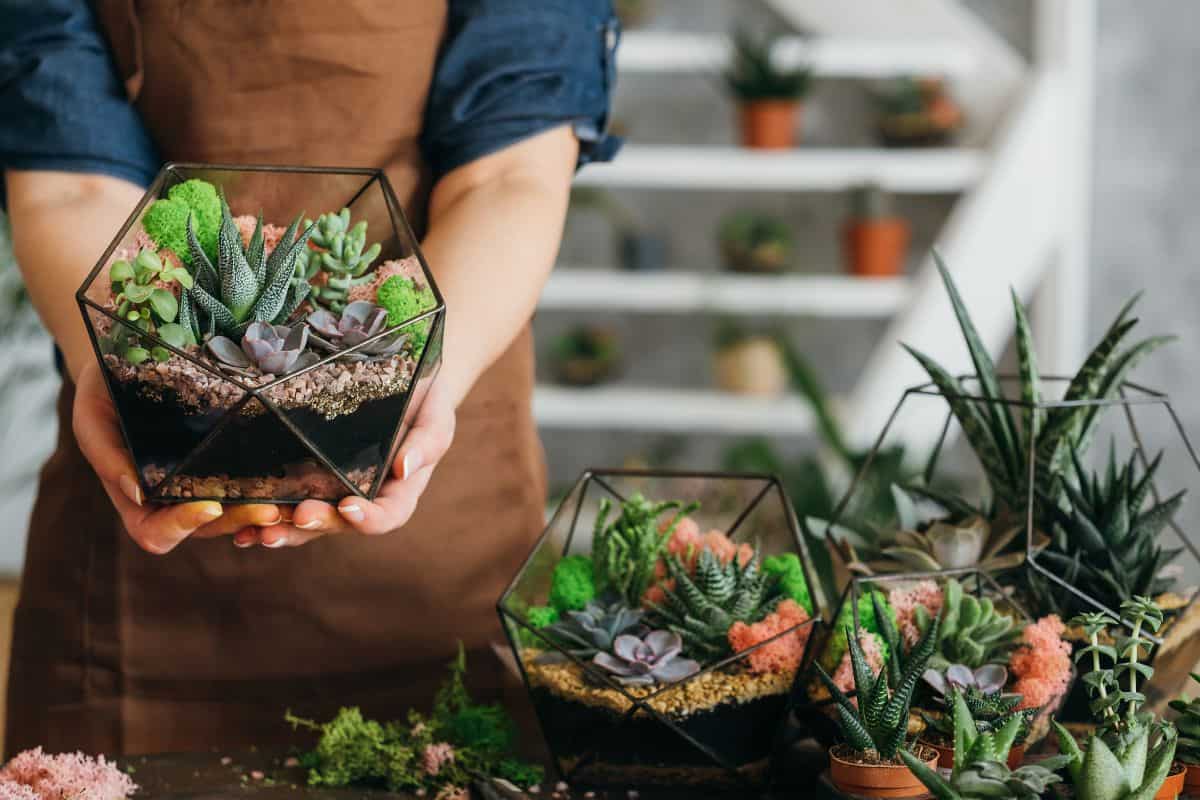
Contents
- 1 Best Succulents for Terrariums
- 1.1 1. Zebra Haworthia (Haworthia fasciata)
- 1.2 2. String of Pearls (Senecio rowleyanus)
- 1.3 3. Burro’s Tail (Sedum morganianum)
- 1.4 4. Leatherpetal (Graptopetalum paraguayense)
- 1.5 5. Pencil Cactus (Euphorbia tirucalli)
- 1.6 6. Moon Cactus (Gymnocalycium)
- 1.7 7. Zwartkop (Aeonium zwartkop)
- 1.8 8. Gollum Jade (Crassula ovata ‘Gollum’)
- 1.9 9. Graptopetalum mendozae
- 1.10 10. Panda Plant (Kalanchoe tomentosa)
- 1.11 11. Coppertone Stonecrop (Sedum nussbaumerianum)
- 1.12 12. Perle von Nurnberg (Echeveria ‘Perle von Nurnberg’)
- 1.13 13. Amethyst Grape (Graptopetalum amethystinum)
- 1.14 14. Kiwi Aeonium (Aeonium ‘Kiwi’)
- 1.15 15. Anacampseros sunrise
- 1.16 16. Sedum Tokyo Sun
- 1.17 17. Elephant Bush (Portulacaria afra)
- 1.18 18. Echeveria dionysos
- 1.19 19. Echeveria pulidonis
- 1.20 20. Aloe juvenna
- 1.21 21. Haworthia aristata
- 1.22 22. Sunburst Aeonium (Aeonium ‘Sunburst’)
- 1.23 23. Jade Plant (Crassula ovata)
- 1.24 24. Echeveria minima
- 1.25 25. Echeveria setosa
- 1.26 26. Aloinopsis luckhoffii
- 1.27 27. Ruby Glow Peperomia (Peperomia graveolens)
- 1.28 28. Crassula Jade Necklace
- 1.29 29. Ivory Towers (Crassula conjuncta)
- 1.30 30. Jelly Bean Plant (Sedum rubrotinctum)
- 1.31 31. Spear-Head (Senecio kleiniiformis)
- 1.32 32. Titanopsis (Titanopsis hugo-schlechteri)
- 1.33 33. Campfire Crassula (Crassula capitella ‘Campfire’)
- 1.34 34. Common Houseleek (Sempervivum tectorum)
- 1.35 35. Echeveria melaco
- 2 Frequently Asked Questions
Best Succulents for Terrariums
1. Zebra Haworthia (Haworthia fasciata)
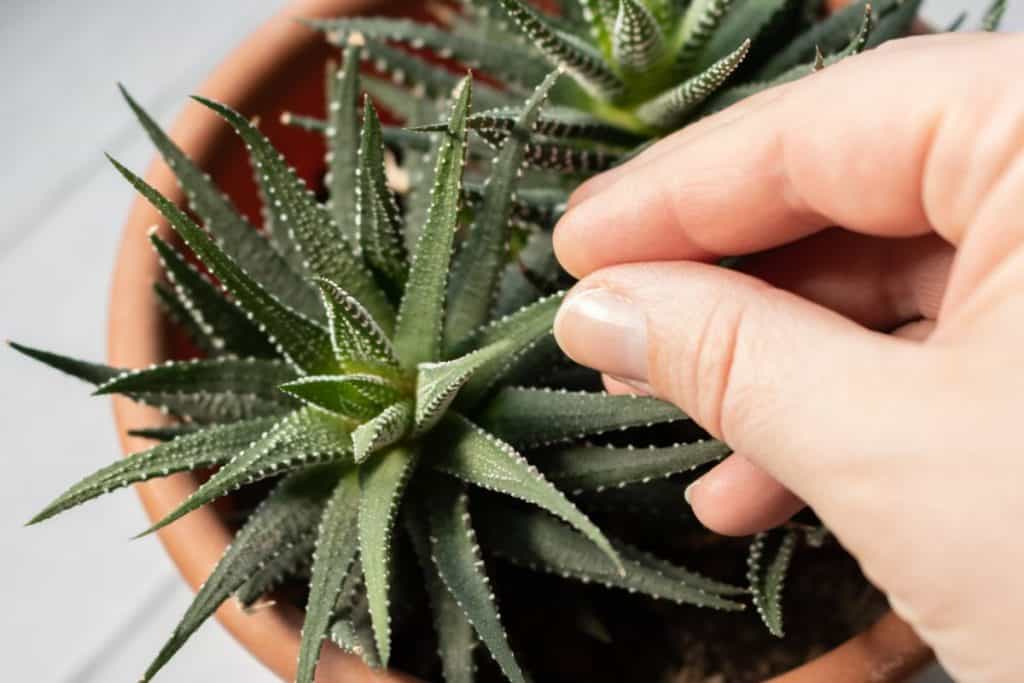
These small, triangular zebra-patterned succulents make charming accent plants tucked amongst larger items in a terrarium. Their compact size allows them to nestle nicely in small spaces.
2. String of Pearls (Senecio rowleyanus)
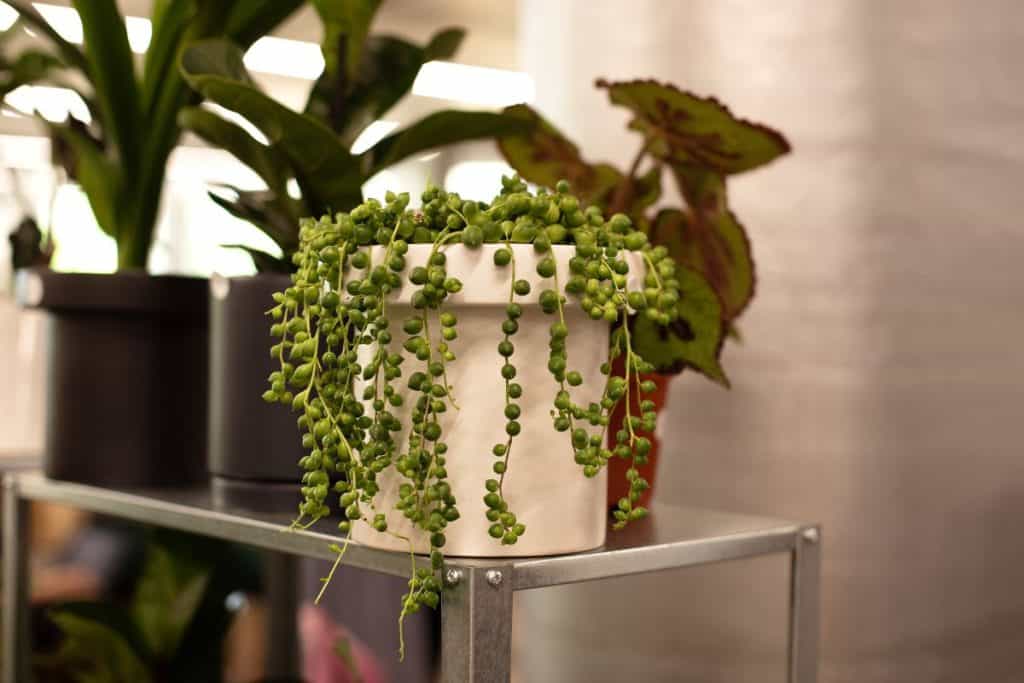
Let the strings of pea-sized succulent pearls trail whimsically over ledges and down the sides of your terrarium for a cascading, fairy-tale effect.
3. Burro’s Tail (Sedum morganianum)
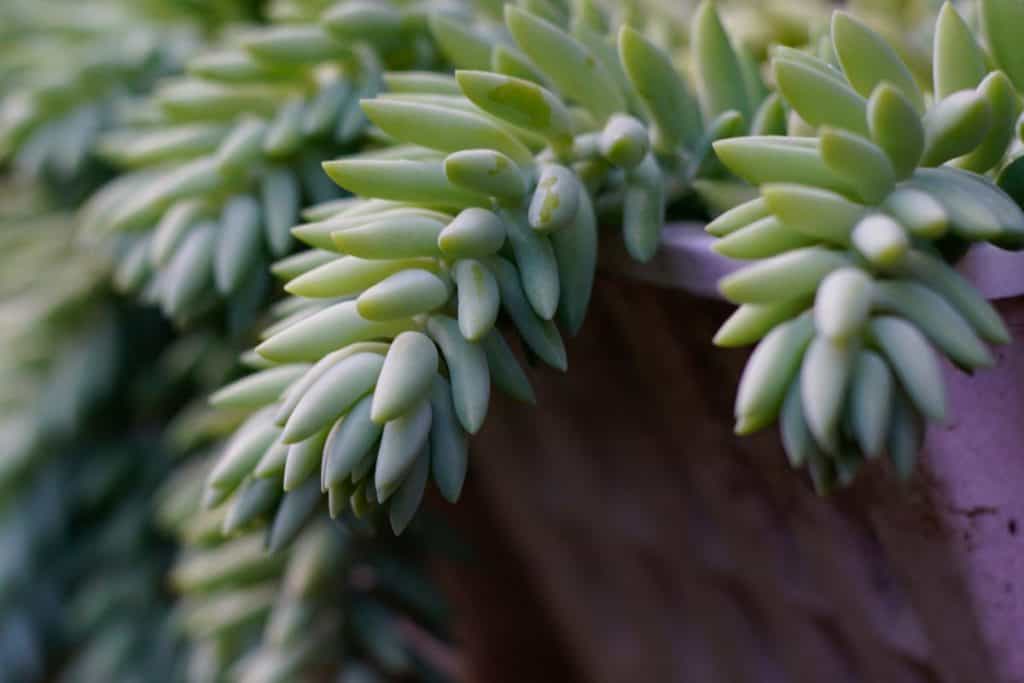
The long, trailing stems covered in plump, overlapping leaves resemble a braided tail. Allow this succulent to spill over rocks or branches in your terrarium.
4. Leatherpetal (Graptopetalum paraguayense)
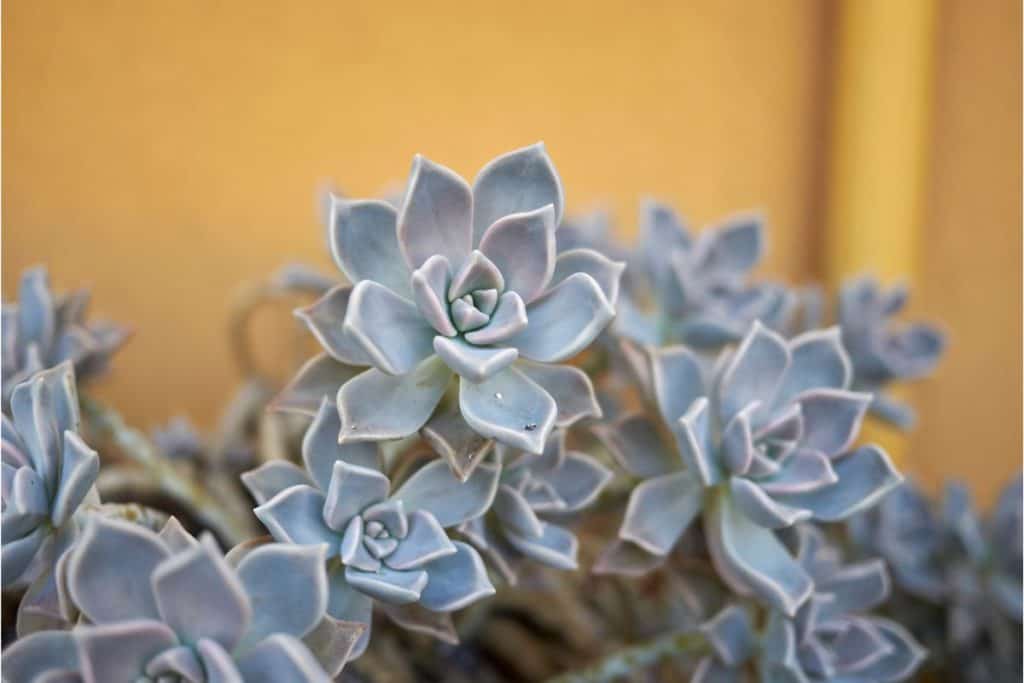
The thick, leather-like leaves have an exquisite texture. Let the rosette shapes of this variety add sculpted form when planted amongst smaller ground cover succulents.
5. Pencil Cactus (Euphorbia tirucalli)
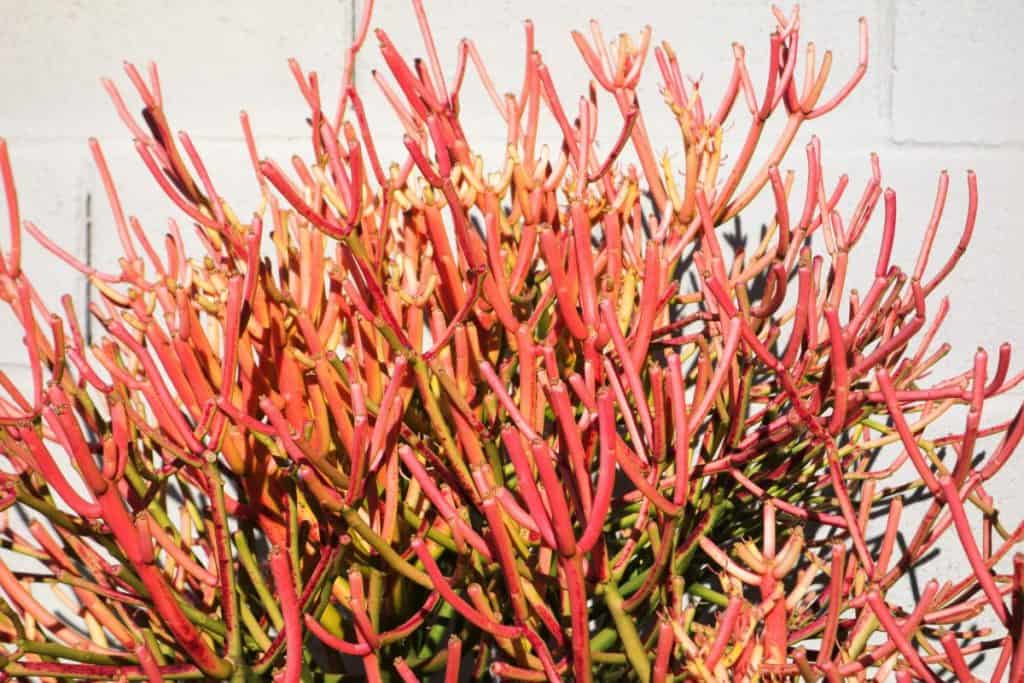
Bring an architectural, tree-like element by including this miniature pencil-thin cactus as a vertical accent in one corner of your terrarium.
6. Moon Cactus (Gymnocalycium)
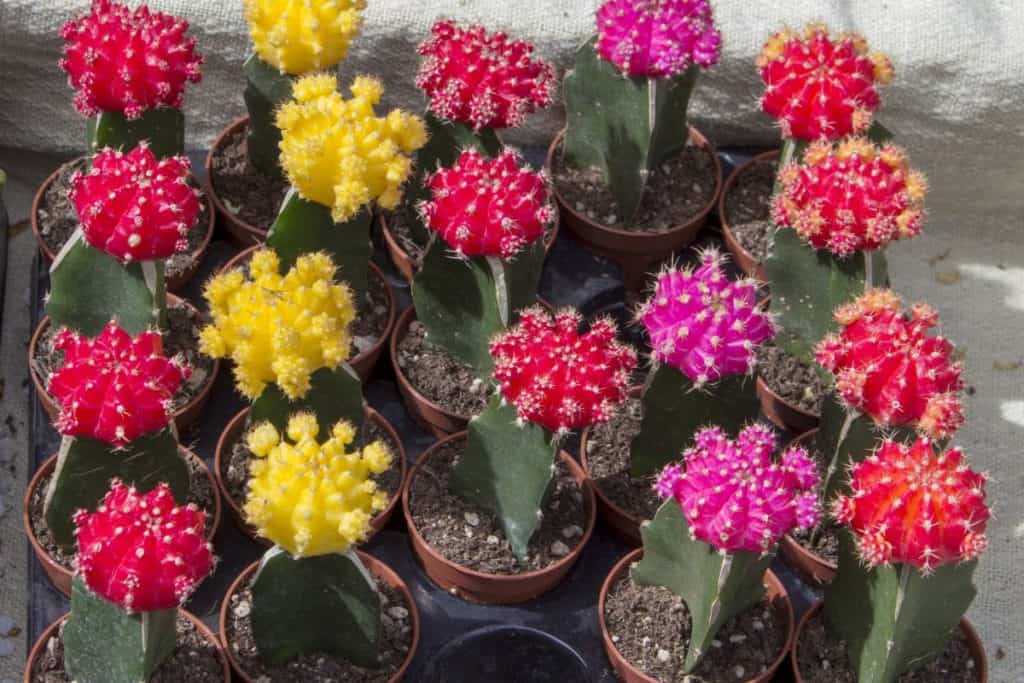
The vibrant red-orange top segment appears to glow, making this a whimsical focal point succulent for terrariums. Position it front and center.
7. Zwartkop (Aeonium zwartkop)
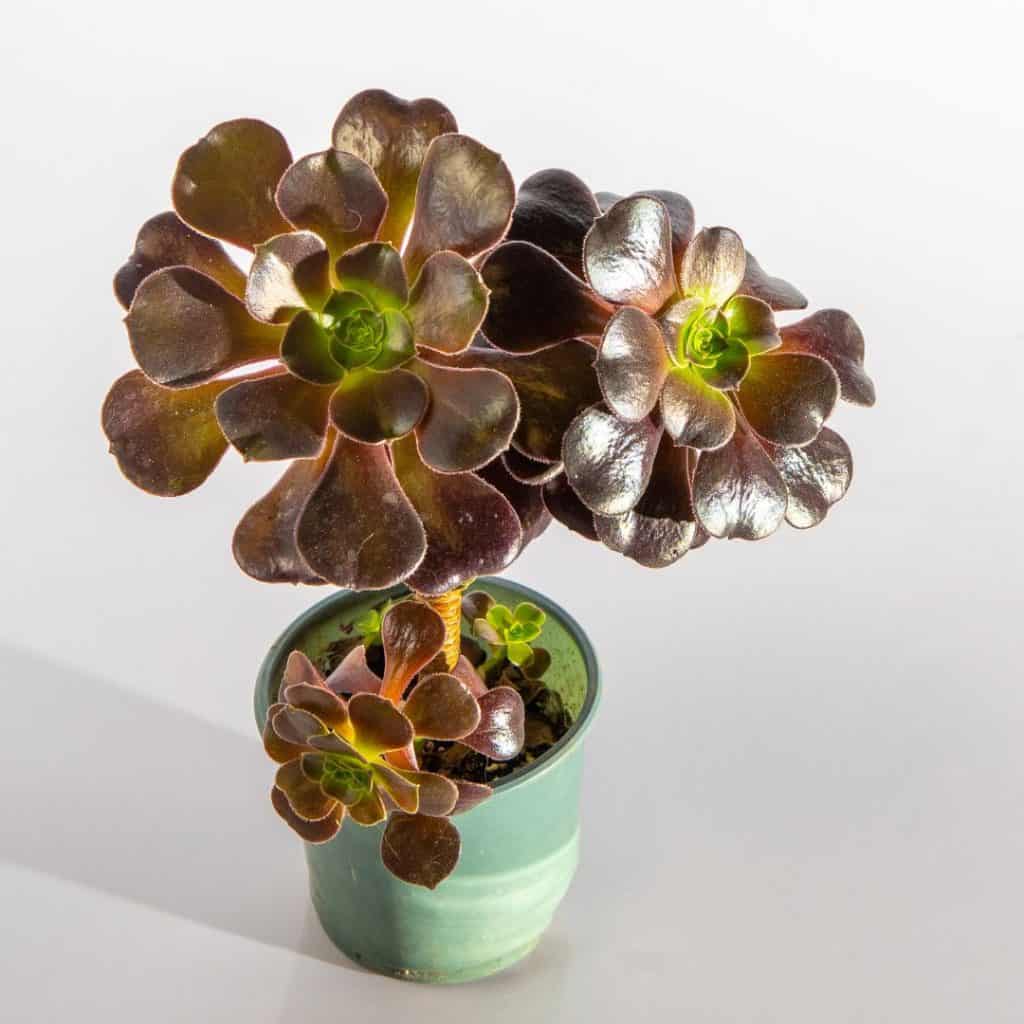
With their large, saucer-shaped leaves, these dramatic rosettes work well as a “specimen” plant to create heightened dimension and drama in terrariums.
8. Gollum Jade (Crassula ovata ‘Gollum’)
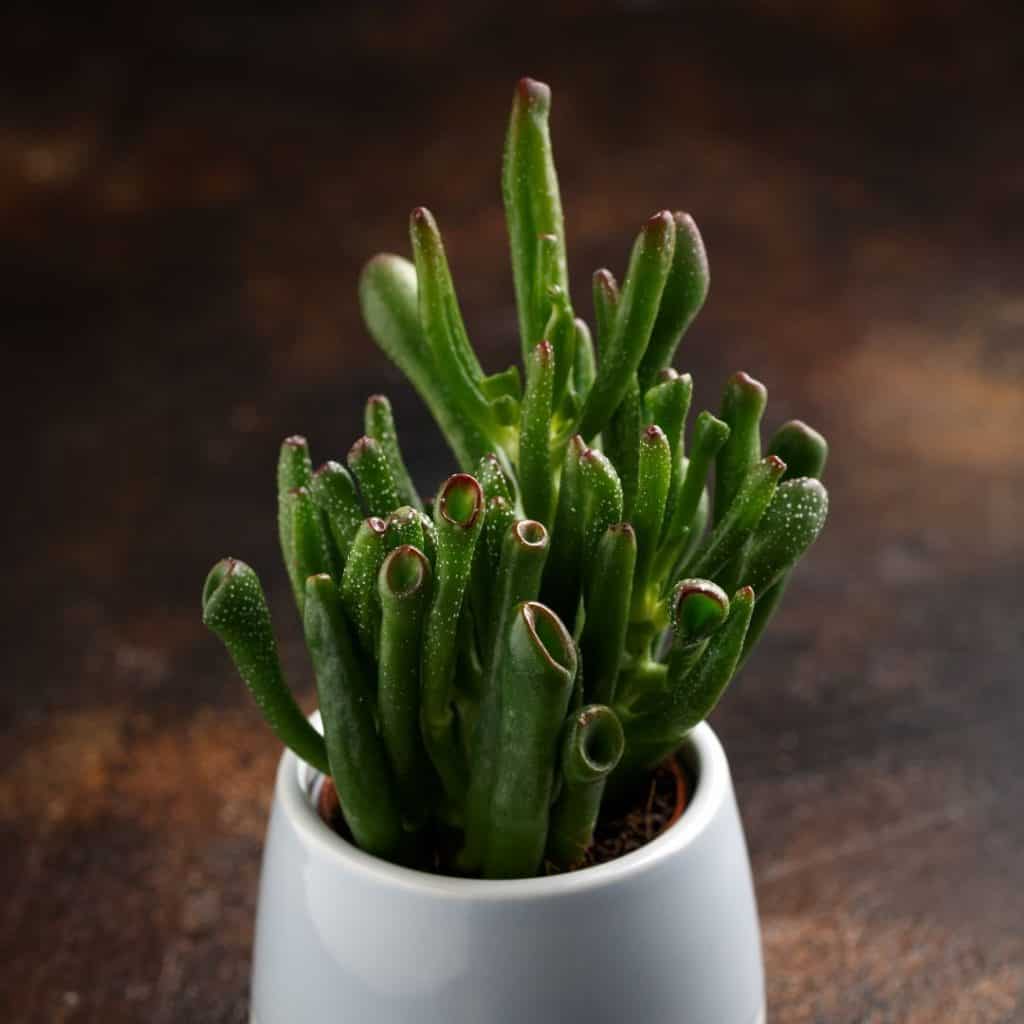
Mimic the spooky, gnarly branches of alien trees by letting the green “shrunken finger” stems of this sculpted succulent twist every which way in your terrarium.
9. Graptopetalum mendozae
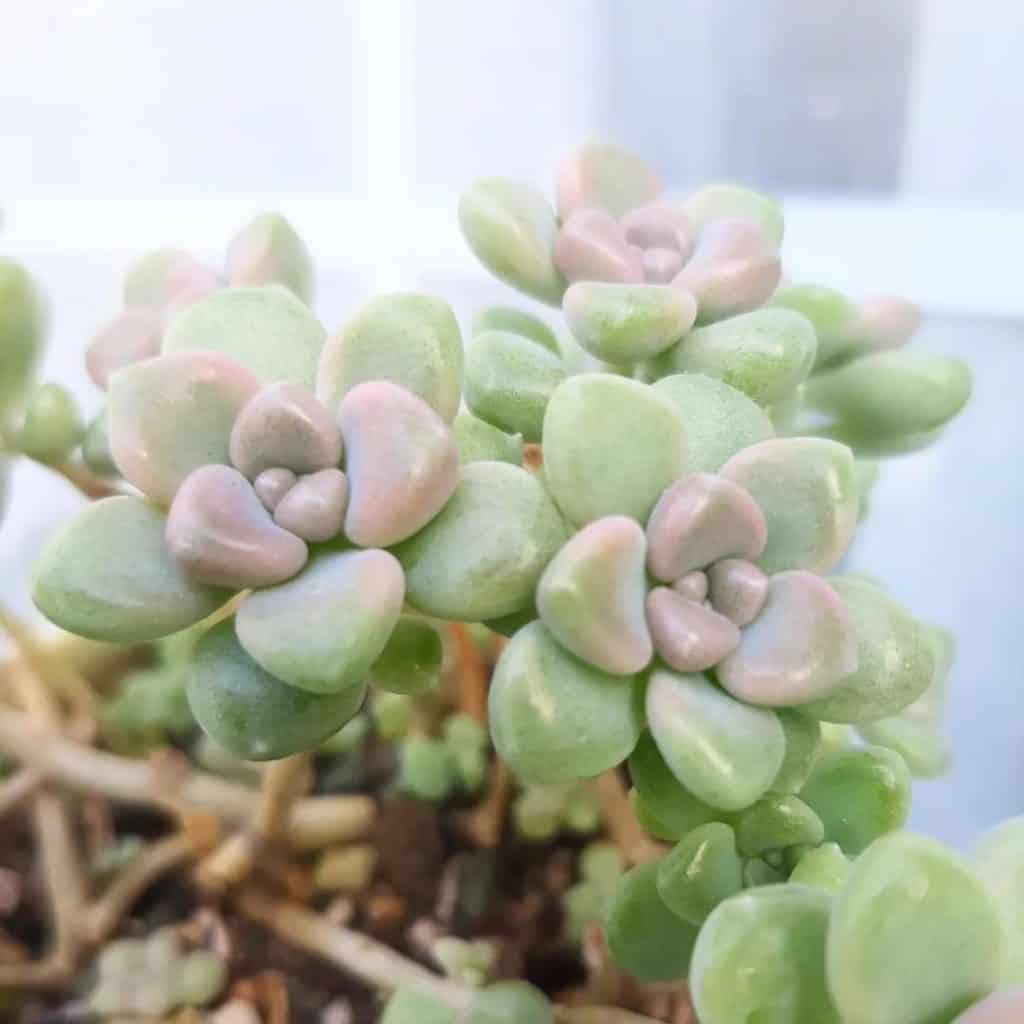
The tight rosettes with grayish-green leaves tinged purple-red make an excellent ground cover, draping over rocks or filling in spaces between larger plants.
10. Panda Plant (Kalanchoe tomentosa)
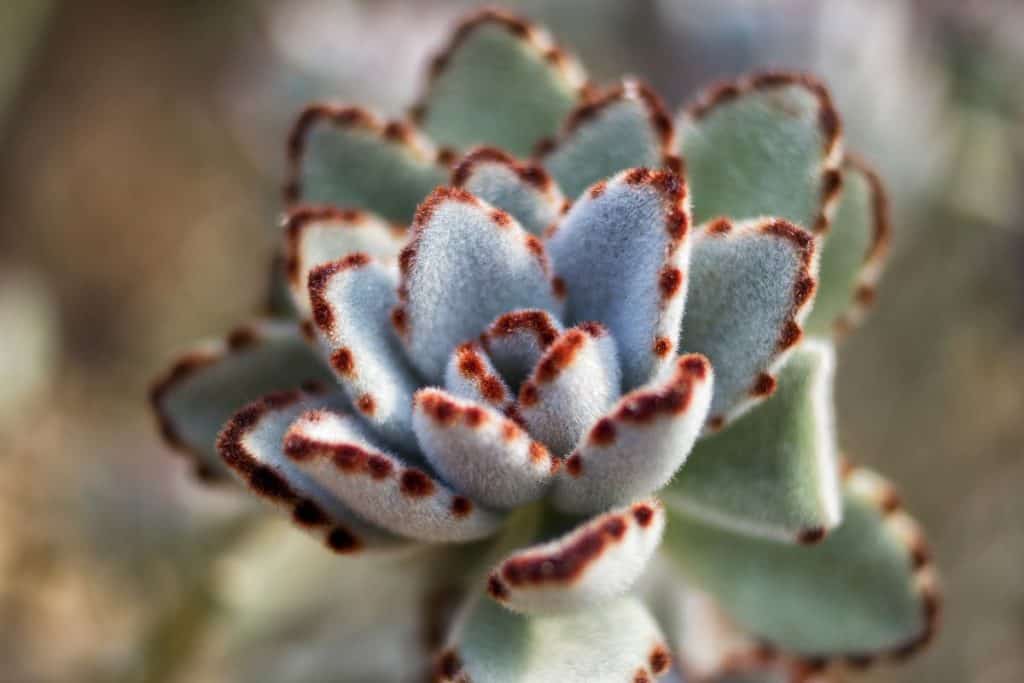
This low, fuzzy succulent with brown-freckled leaves looks like a tiny panda hiding amongst your greenery. Use it as an adorable accent plant.
11. Coppertone Stonecrop (Sedum nussbaumerianum)
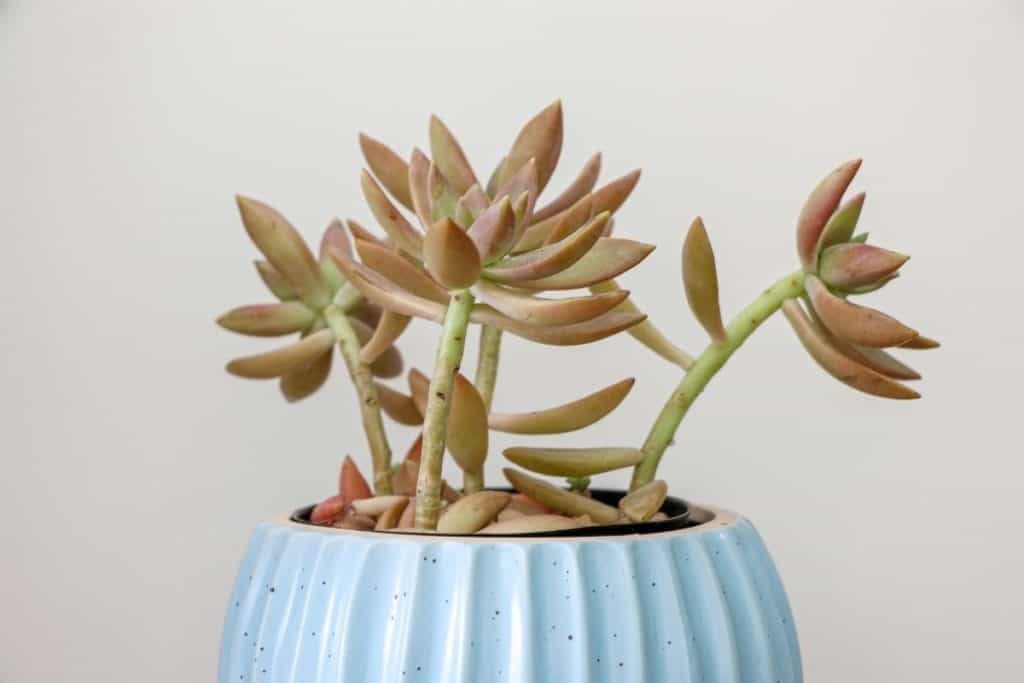
The vibrant, almost neon coppery-red hue of this spreading sedum makes a bold groundcover or trailing accent in miniature landscapes.
12. Perle von Nurnberg (Echeveria ‘Perle von Nurnberg’)
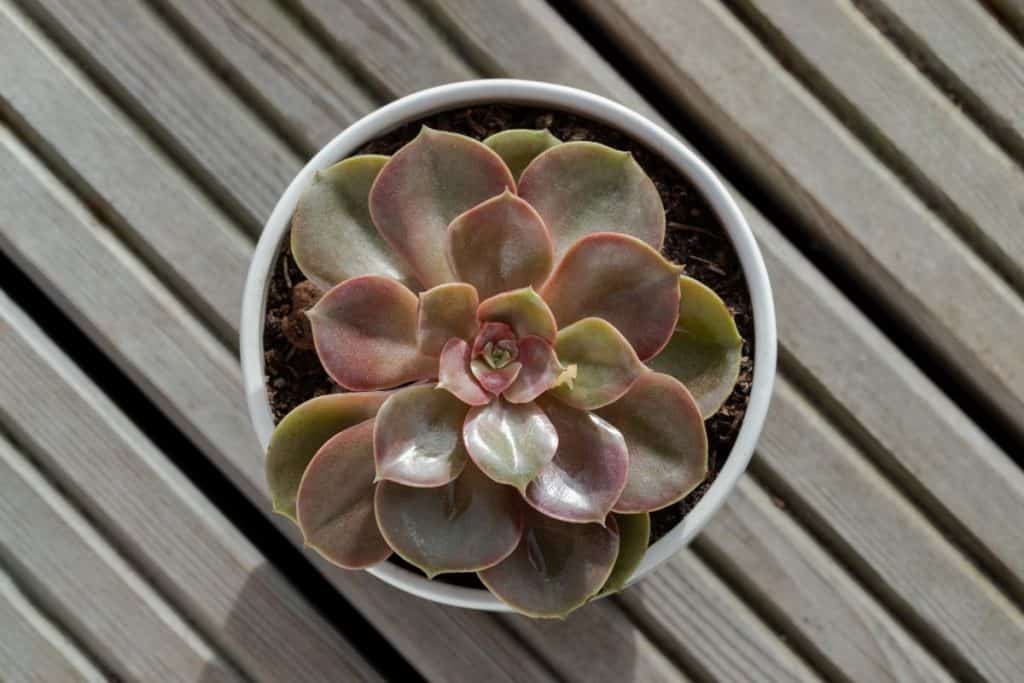
Rosettes up to 8 inches wide with lavender-pink hues work perfectly as a focal point plant. The yellow and pink blooms are an added delight.
13. Amethyst Grape (Graptopetalum amethystinum)
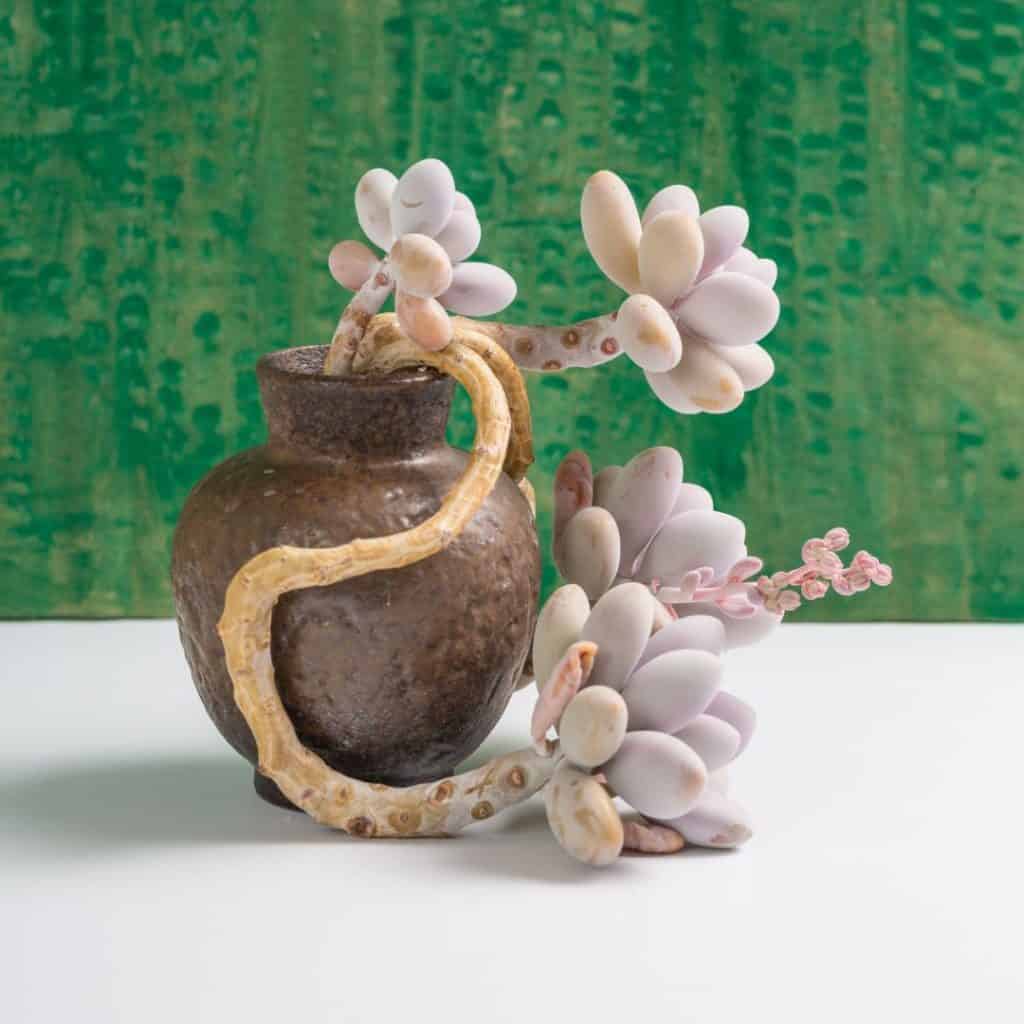
This low-grower with plump, purple-tinged leaves resembles semi-precious amethyst gems strewn across your terrarium’s floor. Use as a striking ground cover.
14. Kiwi Aeonium (Aeonium ‘Kiwi’)
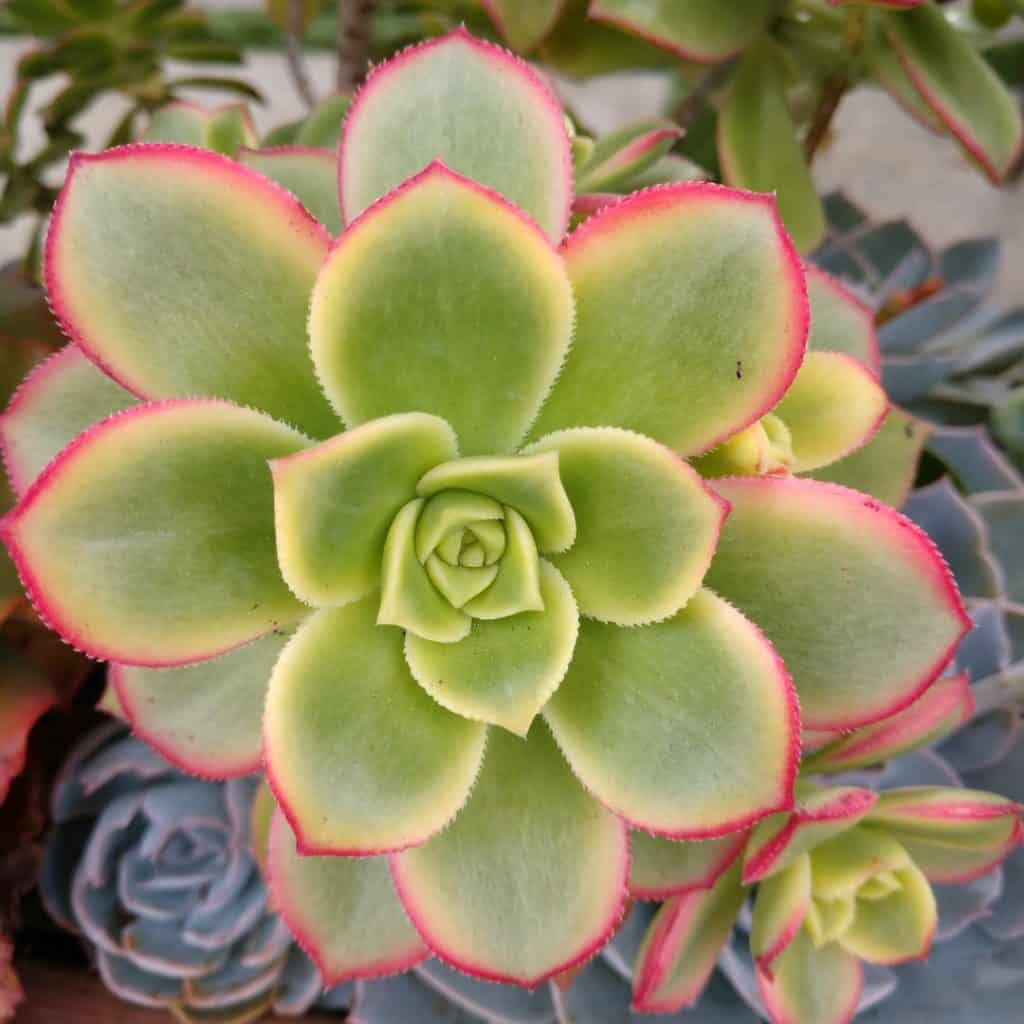
Bold emerald spoon-shaped leaves with hot pink edges create a center of attention. Let one or more offset plants emerge as terrarium showstoppers.
15. Anacampseros sunrise
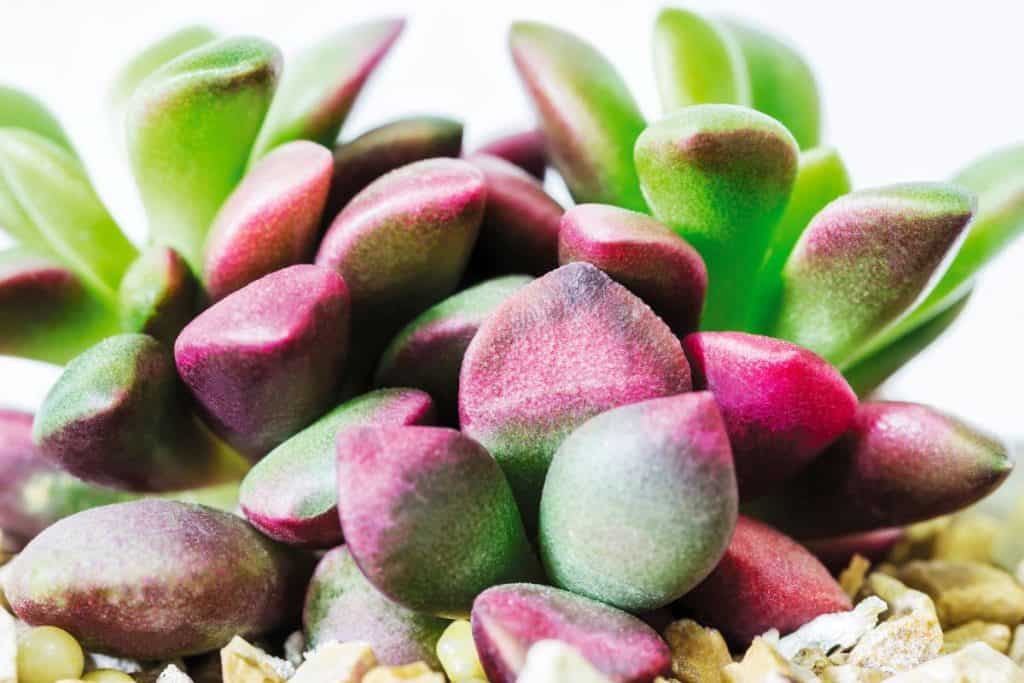
Mimic the warm tones of sunrise across the succulent mat by using this variety as a vibrant groundcover that shifts from pink to peach to yellow to green.
16. Sedum Tokyo Sun
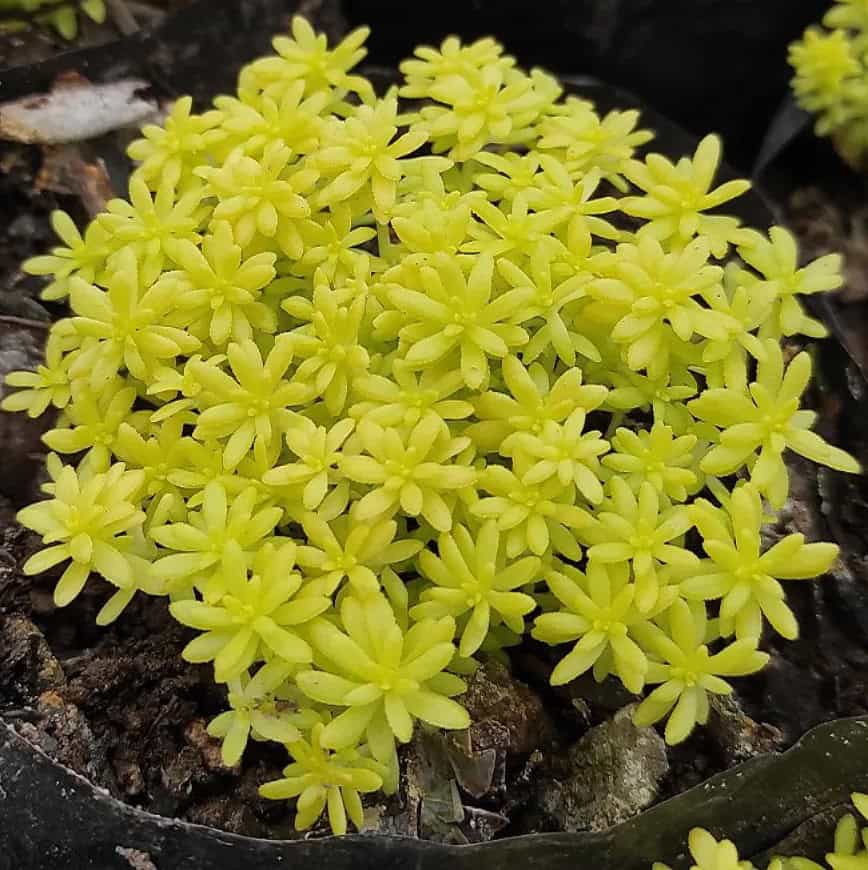
This sunny yellow-green spreading sedum makes a perfect filler across the base of your terrarium, almost like a miniature ground-hugging field of sun-rays.
17. Elephant Bush (Portulacaria afra)
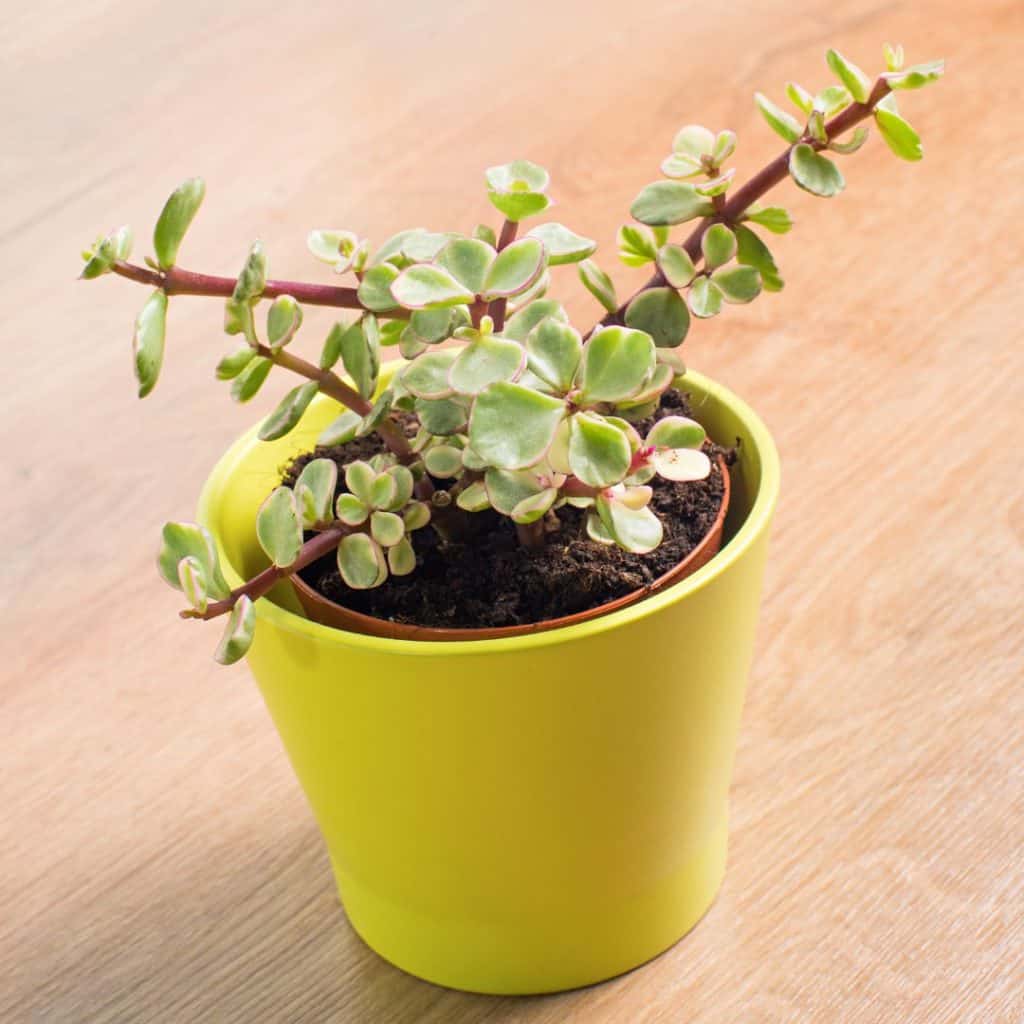
Include this small, tree-like succulent as a quirky terrarium centerpiece. The reddish-green branching “trunk” can get up to 2 feet tall.
18. Echeveria dionysos
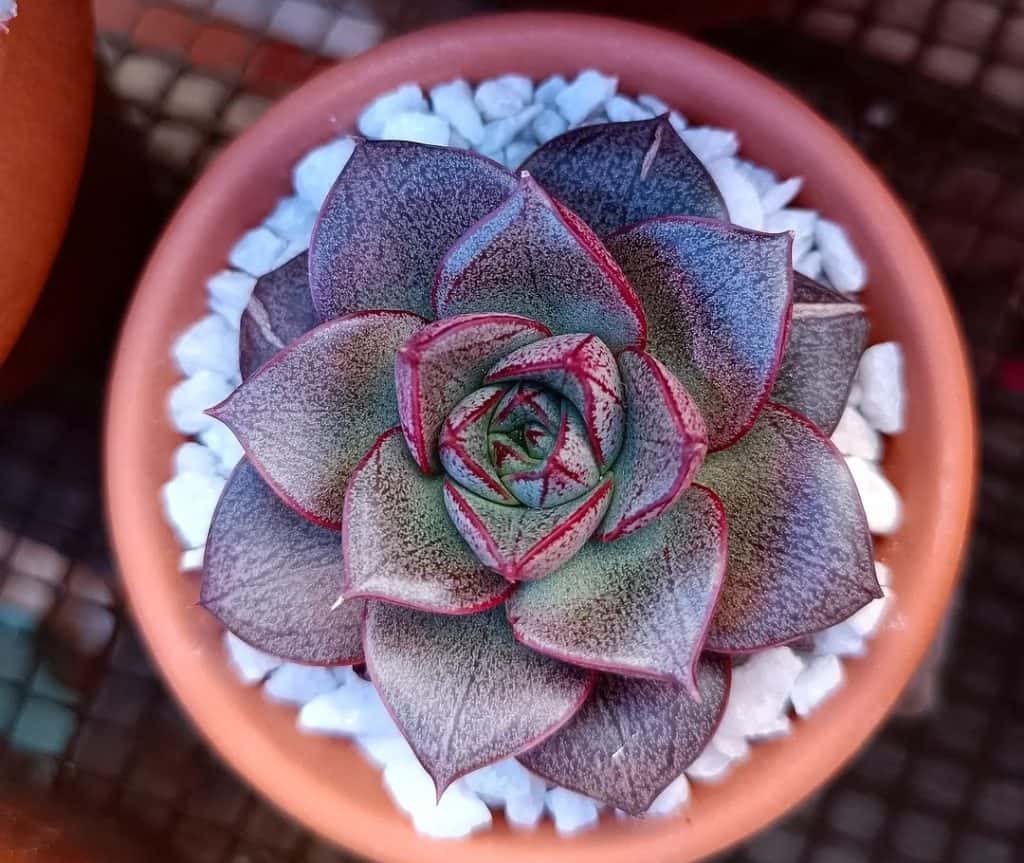
This petite echeveria creates tight rosettes of fleshy leaves that blush different shades depending on sun exposure – from mint green to gray-green to deep olive. The reddish-brown leaf edges add intricate detail. Use several clustered together as miniature accent plants.
19. Echeveria pulidonis
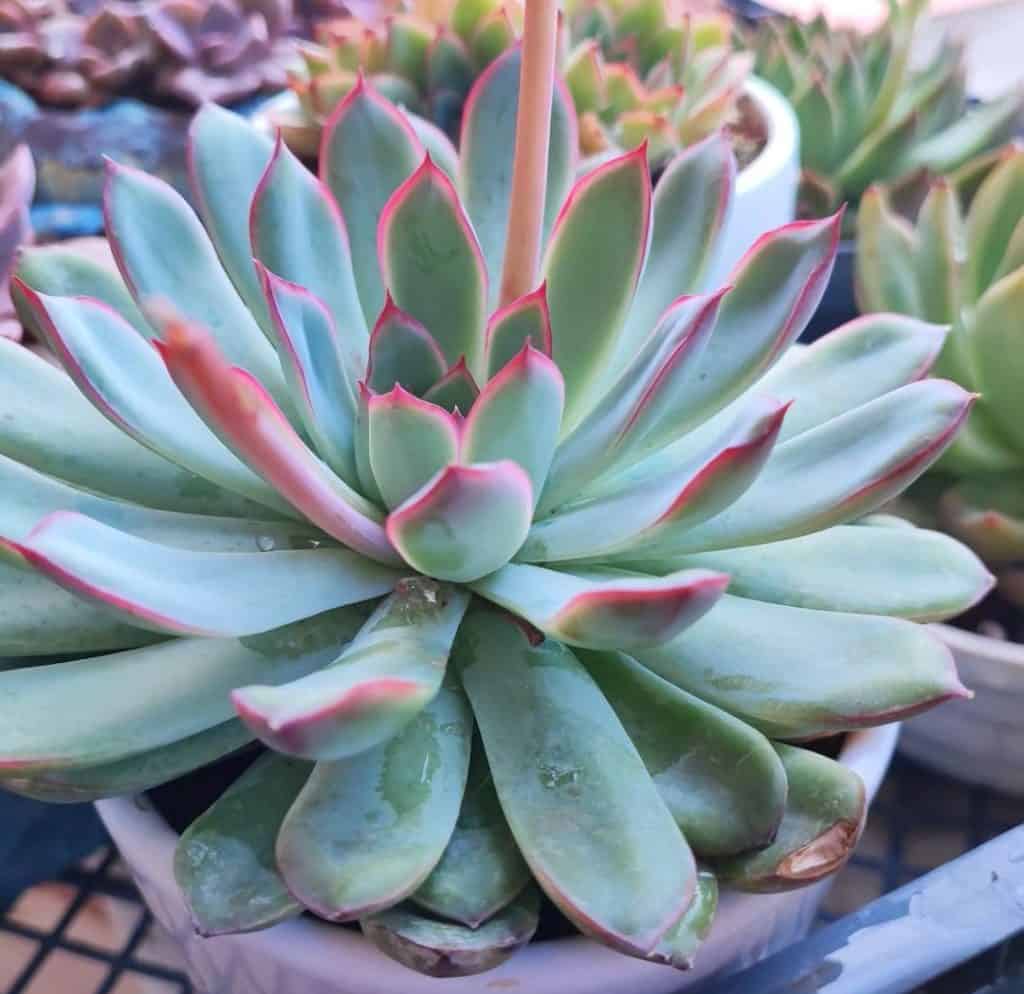
Make this the centerpiece succulent for your terrarium. As it matures, Echeveria pulidonis forms clusters of tight rosettes with pointed, tapered gray-green leaves edged in red. The geometric shapes and contrasting colors create a striking focal point. Small yellow flowers may also appear, adding more visual interest. Position one large mature cluster as the clear “prize” plant.
20. Aloe juvenna
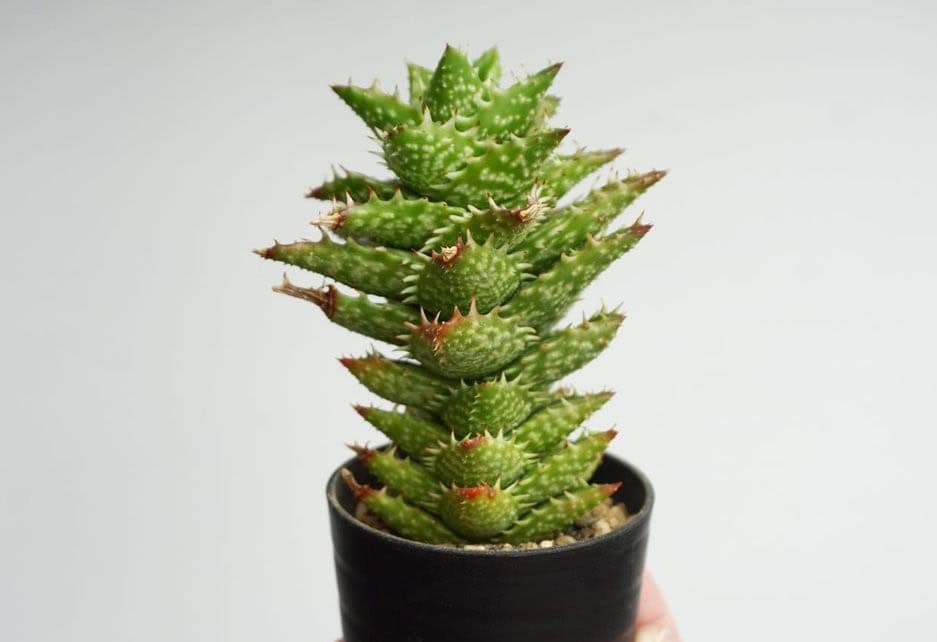
Include this small, spiky aloe toward the back or corner of a terrarium as a sculptural, spiky accent. The orange-tinged leaves add rich color.
21. Haworthia aristata
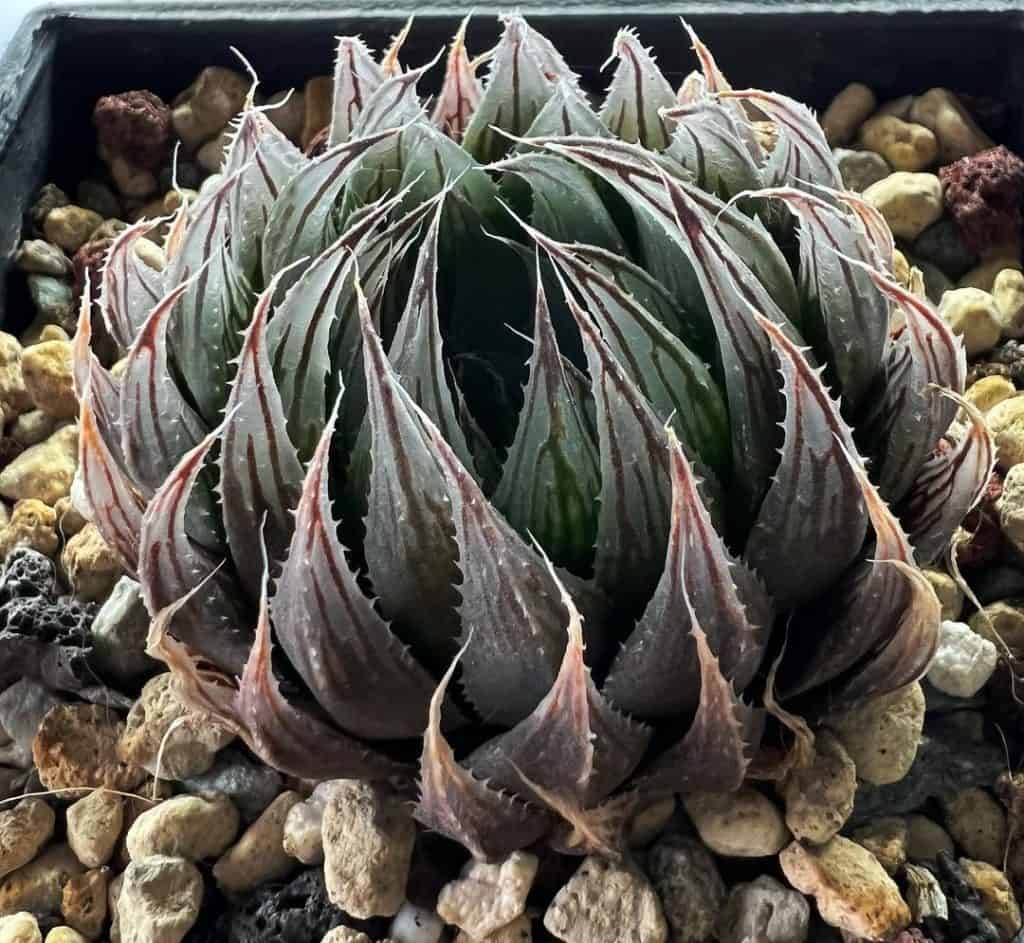
The tight, green rosette shape makes this small, spiky succulent a perfect filler plant to tuck between rocks or other terrarium accessories.
22. Sunburst Aeonium (Aeonium ‘Sunburst’)
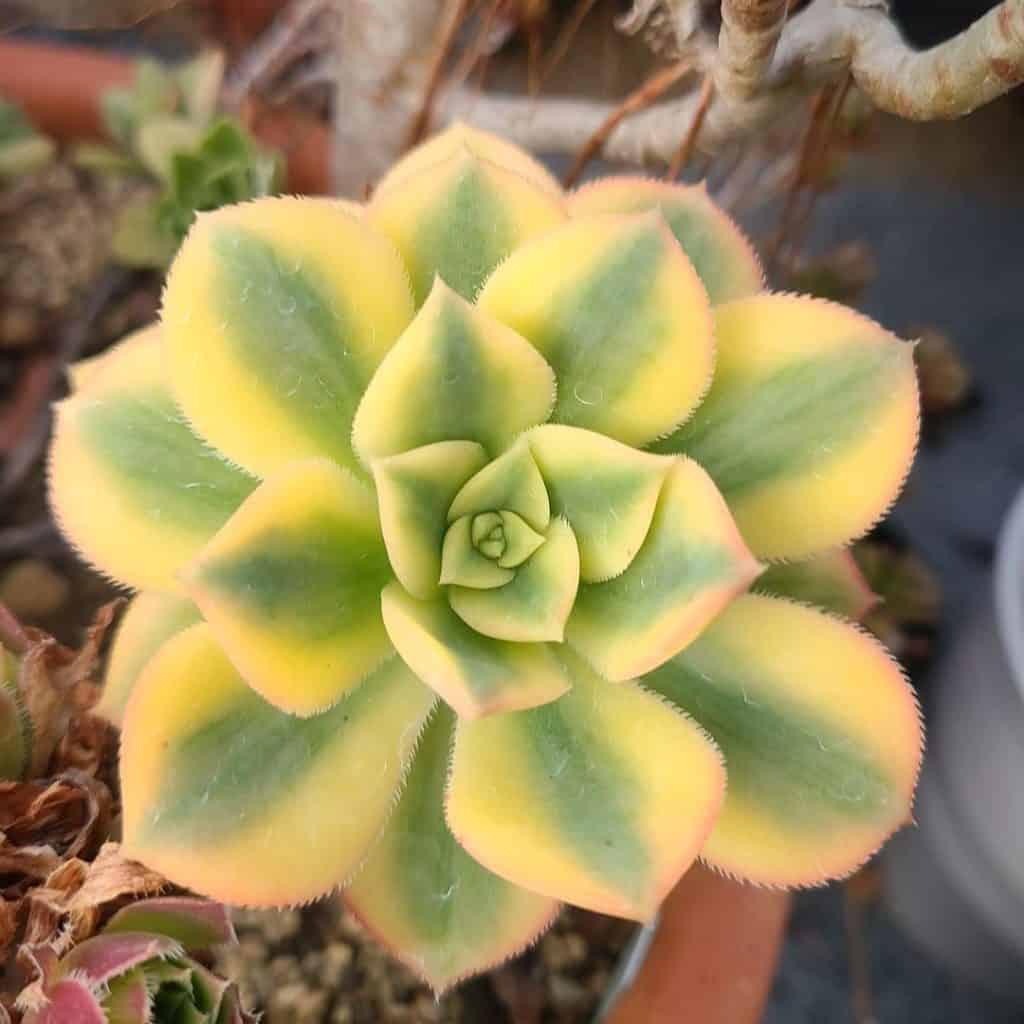
Use this eye-catching, branching succulent as a bold focal point, showcasing the pink-edged green and white saucers formed by each offset.
23. Jade Plant (Crassula ovata)
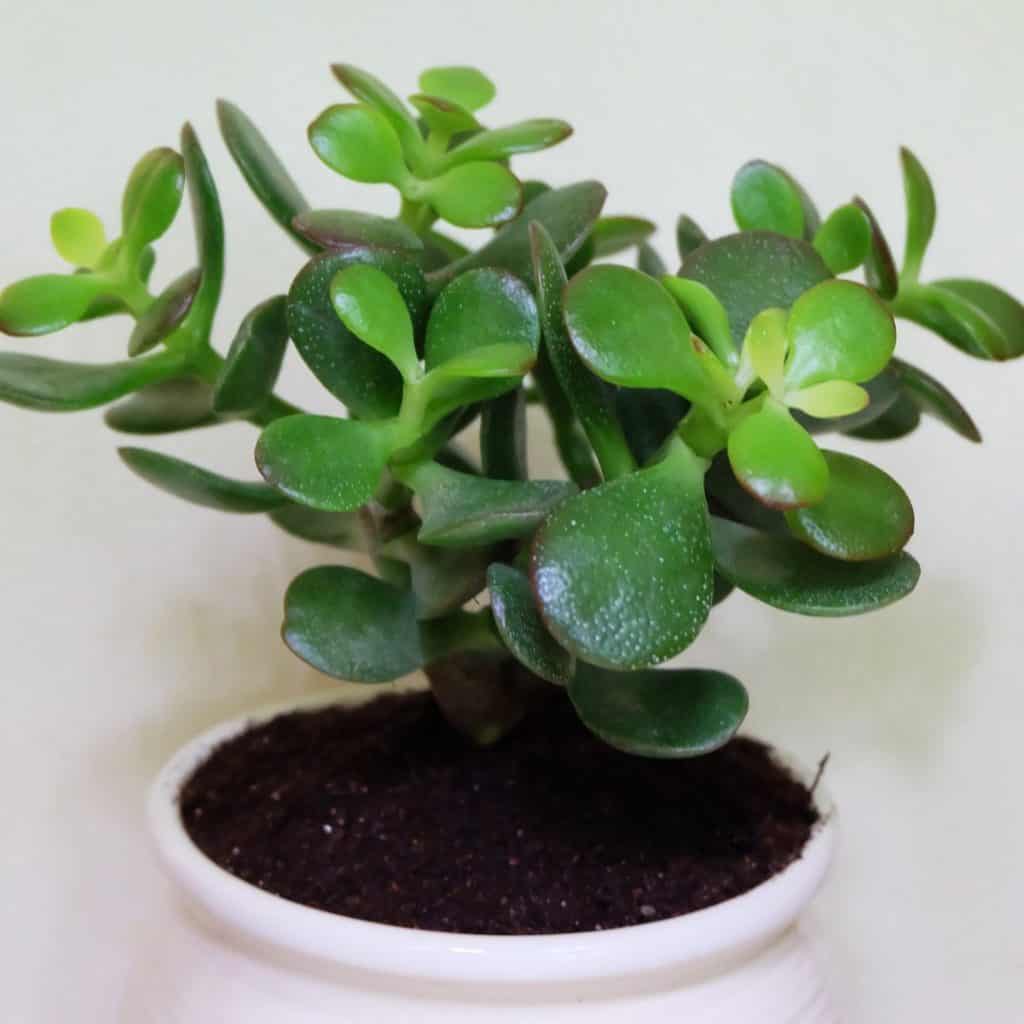
Jade plants are one of the easiest succulents to take care of. It looks like a tiny tree and adds a great sense of coziness and even quirk to your terrarium! Position it front and center as a focal point. It typically has white or pink blooms and is an extremely common houseplant because of how easy it is to maintain in the terrarium environment.
24. Echeveria minima
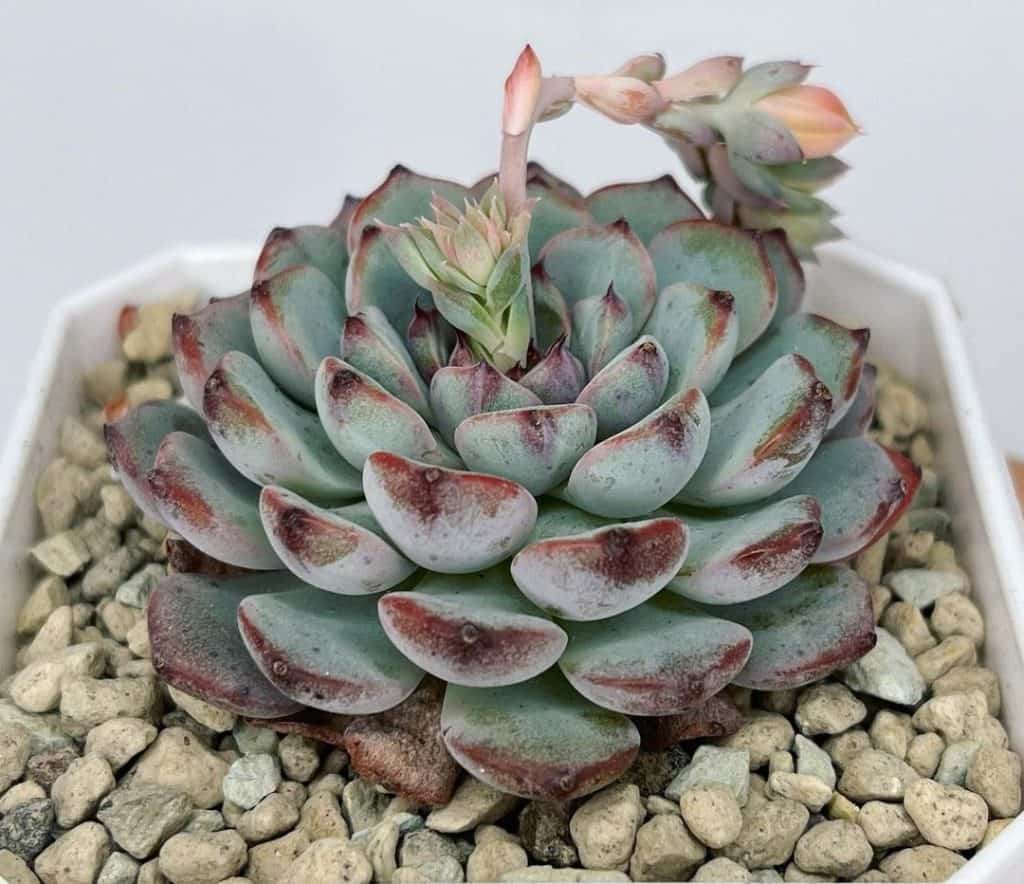
Don’t overlook these tiny, silver-green rosettes! They’ll add delightful scale when planted along the terrarium’s outer edges, almost like miniature gardens.
25. Echeveria setosa
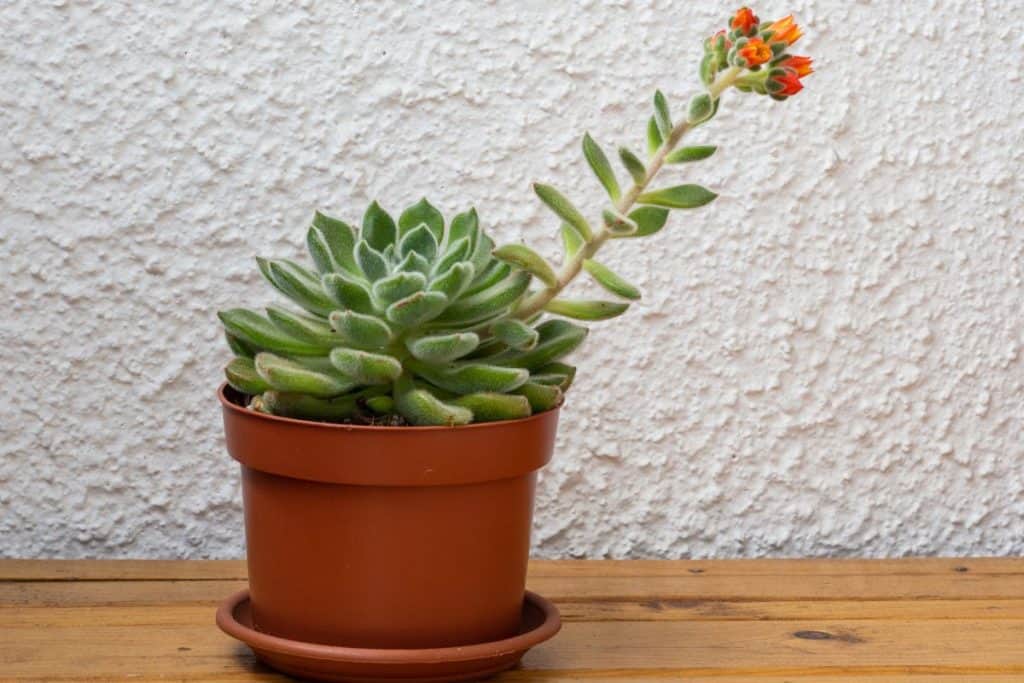
The tall arching stems with reddish-orange flowers erupt out of tight rosettes like sparks of fireworks. Use as an accent plant.
26. Aloinopsis luckhoffii
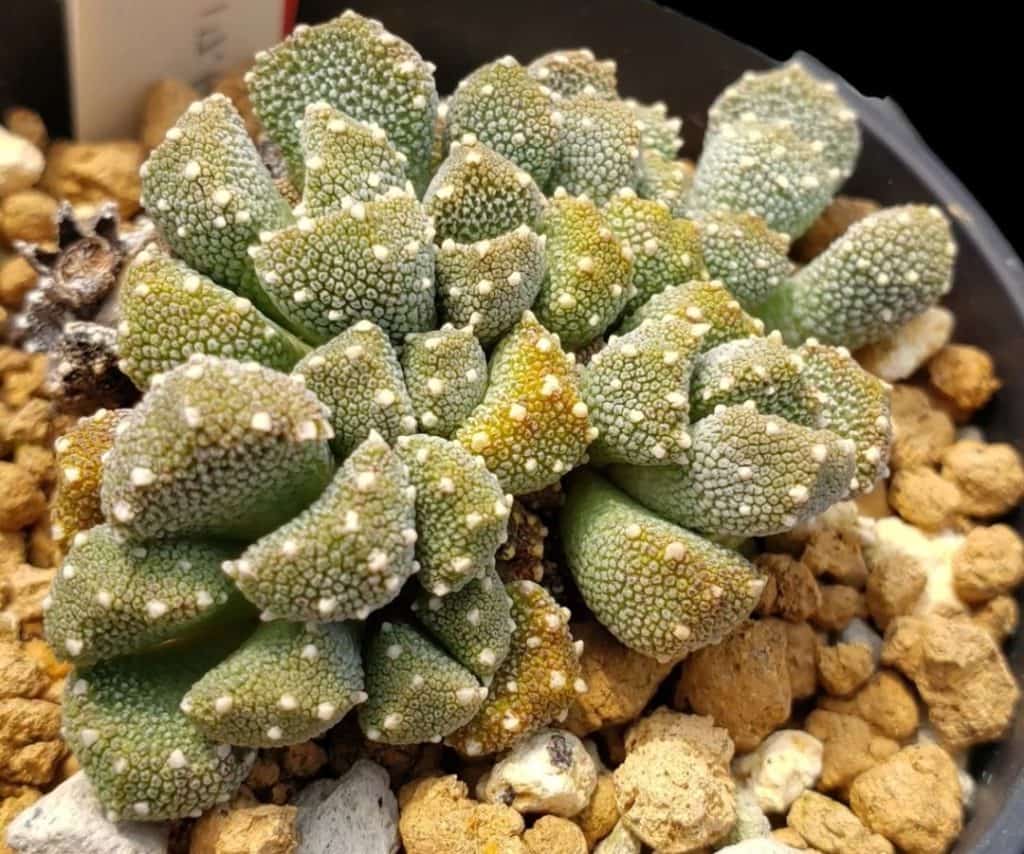
This dense mat-forming succulent works beautifully as vibrant groundcover, draping over rocks and logs in miniature landscapes.
27. Ruby Glow Peperomia (Peperomia graveolens)
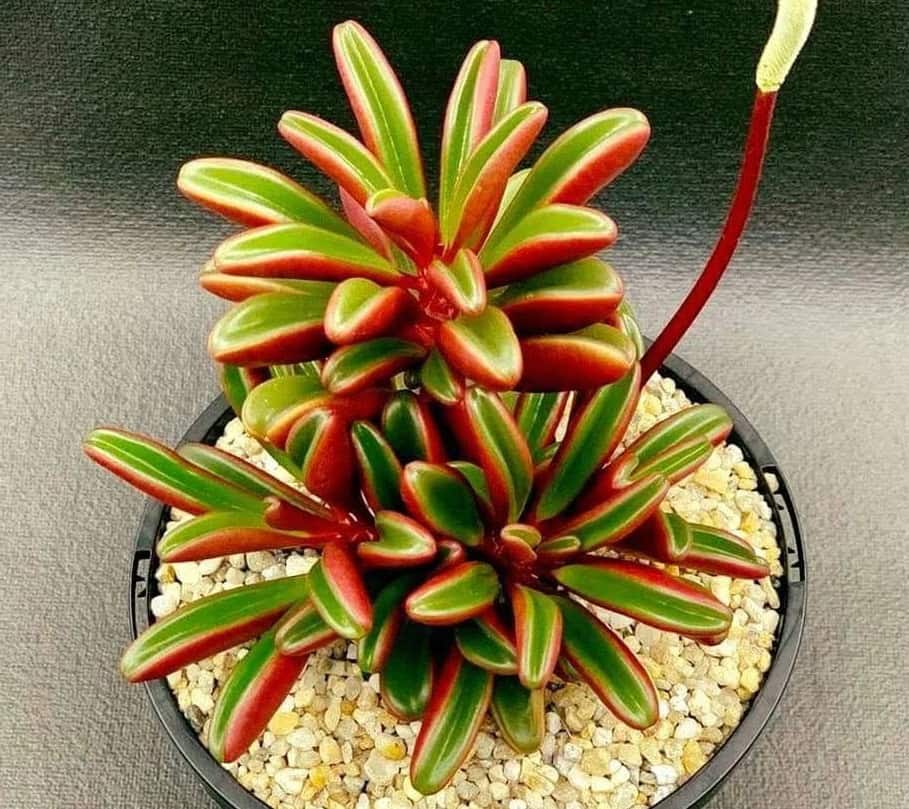
With their translucent ruby, almost glowing leaves, these upright succulents add electric pops of color throughout terrariums. Use as scattered accents.
28. Crassula Jade Necklace
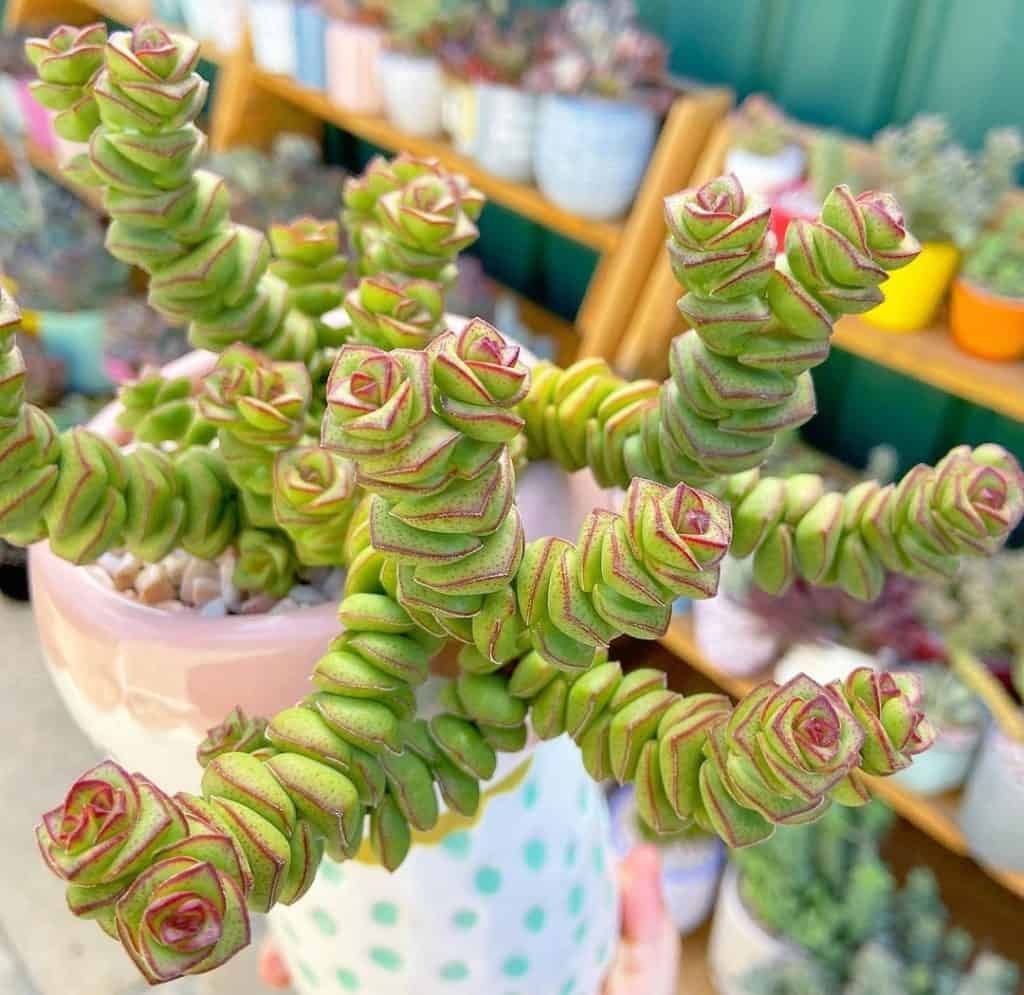
Let the long stems of succulent “beads” drape and tumble down terrarium sides and accent pieces for an enchanting trailing effect.
29. Ivory Towers (Crassula conjuncta)
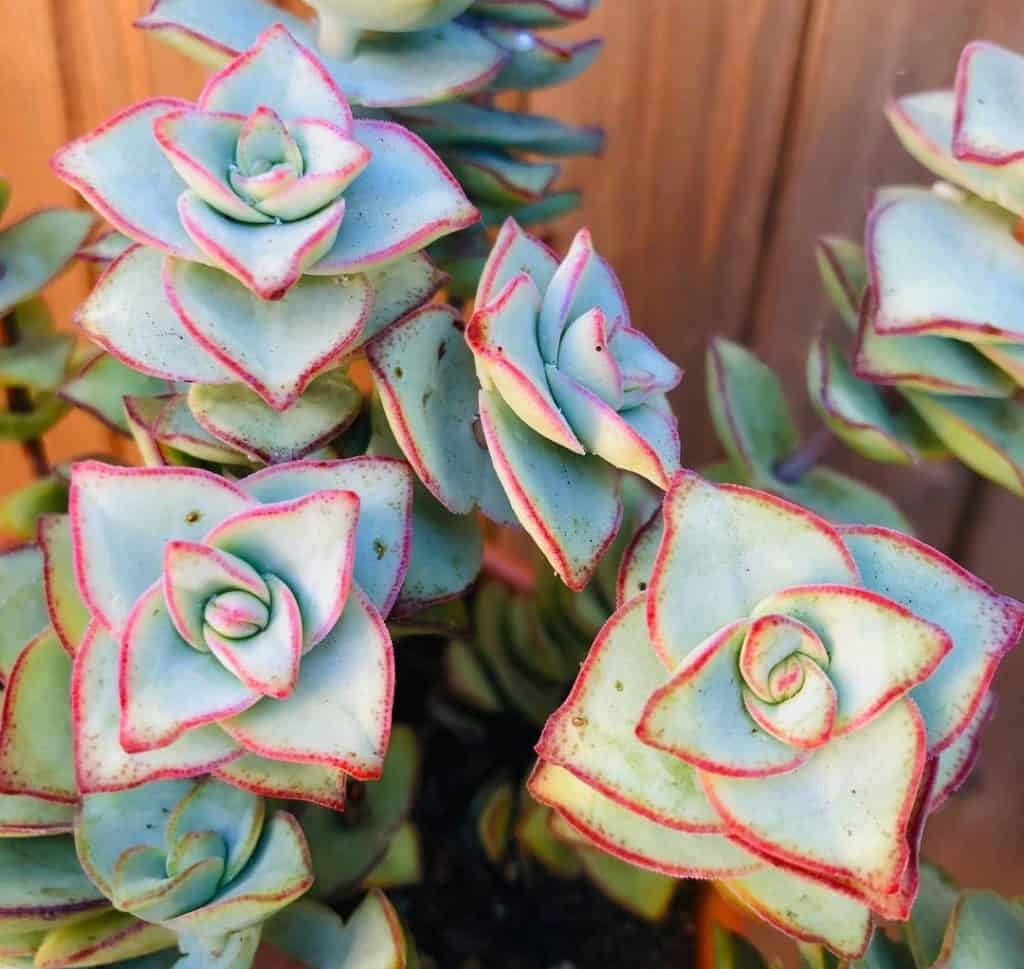
The vertical growth and pale gray-silver leaves flushed with red on this groundcover makes it resemble a carpet of tiny sculpted towers.
30. Jelly Bean Plant (Sedum rubrotinctum)
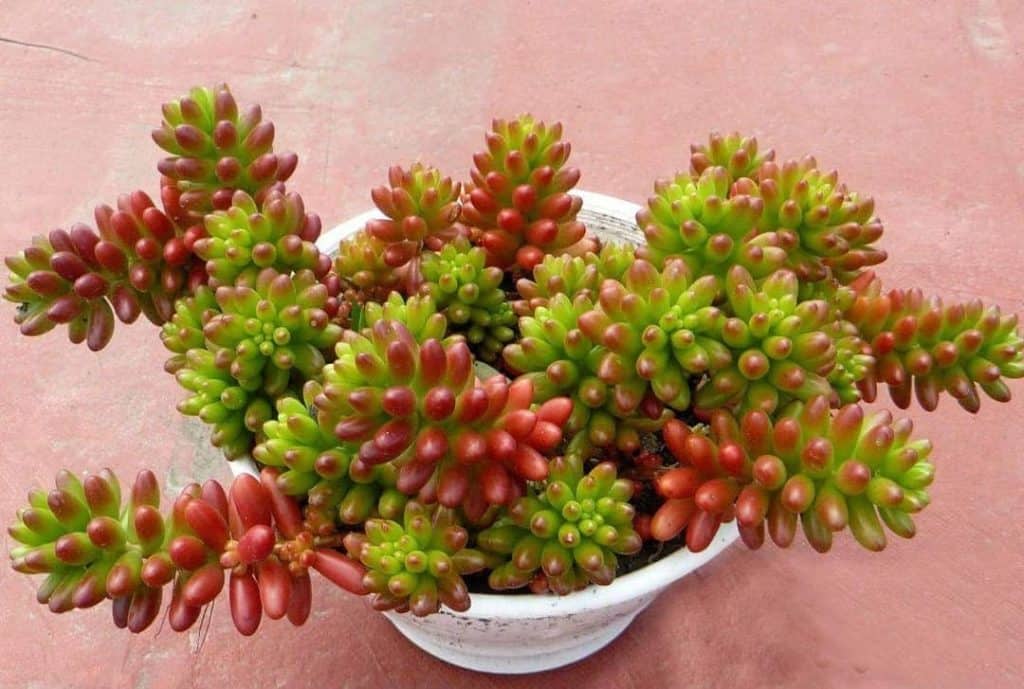
These plump, jelly bean-shaped leaves add a whimsical touch when sprinkled throughout as small accents between larger plants and features.
31. Spear-Head (Senecio kleiniiformis)
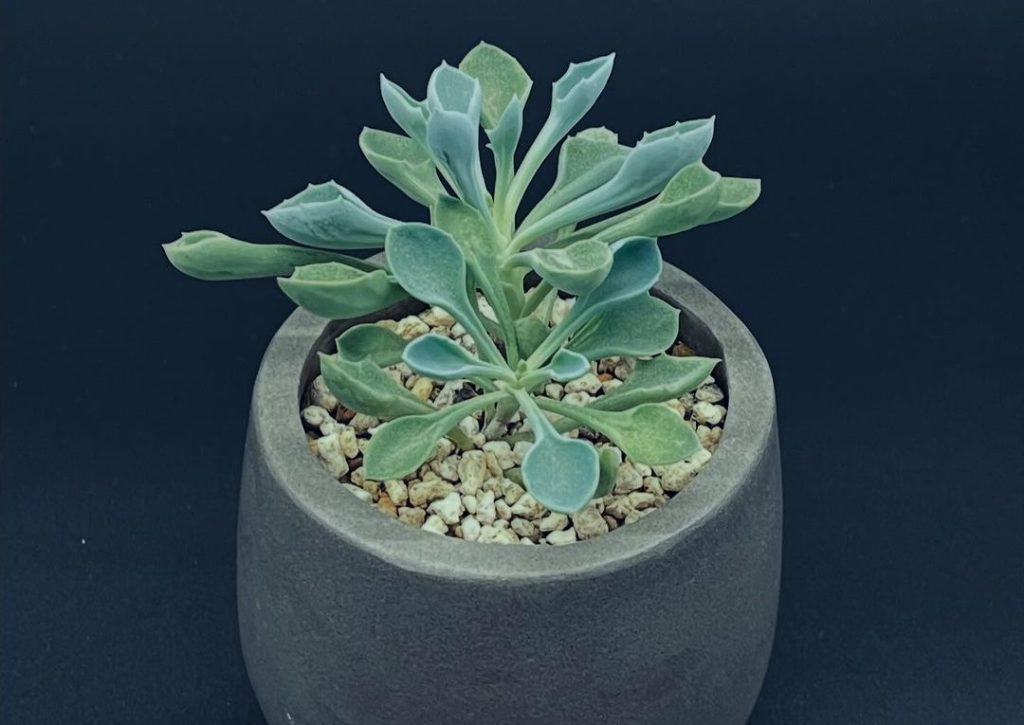
Interesting blue-green spear-like leaves form tight rosettes that can be used as textured accents when planted in groups around terrarium decor.
32. Titanopsis (Titanopsis hugo-schlechteri)
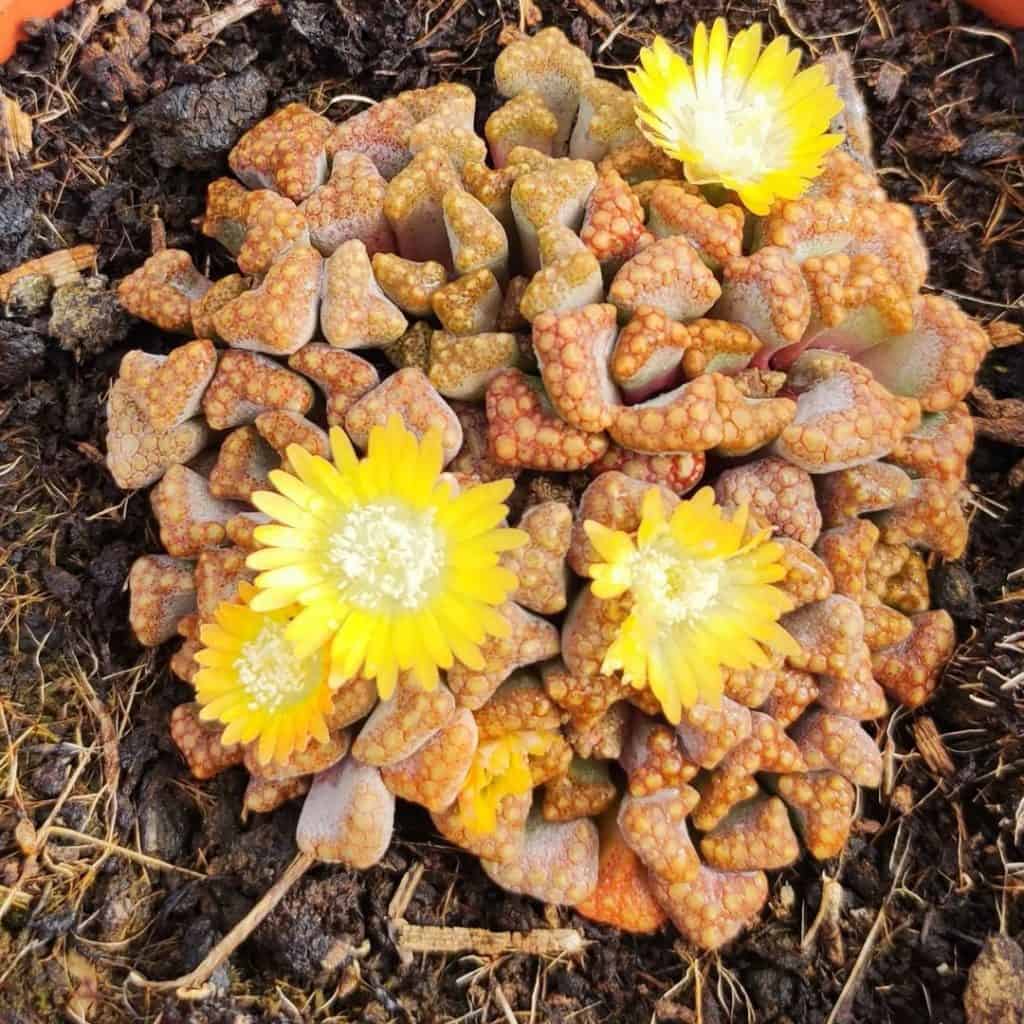
This exquisitely formed, clustered succulent looks like a sculptural work of art. Use one as a featured focal point or specimen in your miniature landscape.
33. Campfire Crassula (Crassula capitella ‘Campfire’)
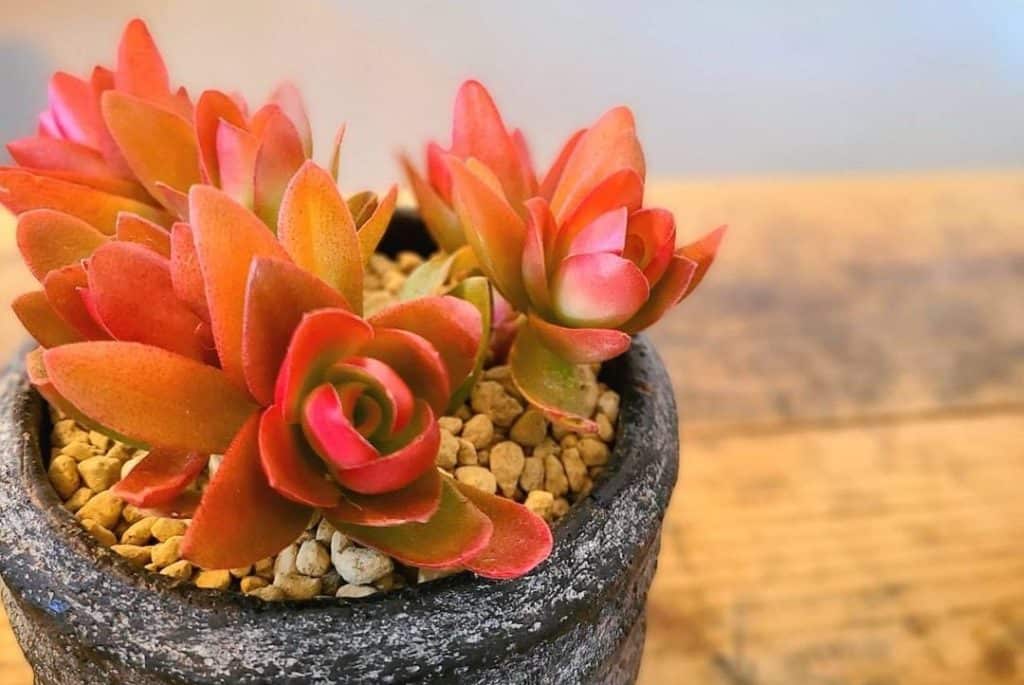
Brilliant emerald green leaves tinged with red mimic a miniature “campfire” when massed together in the terrarium. Try clumping as a groundcover.
34. Common Houseleek (Sempervivum tectorum)
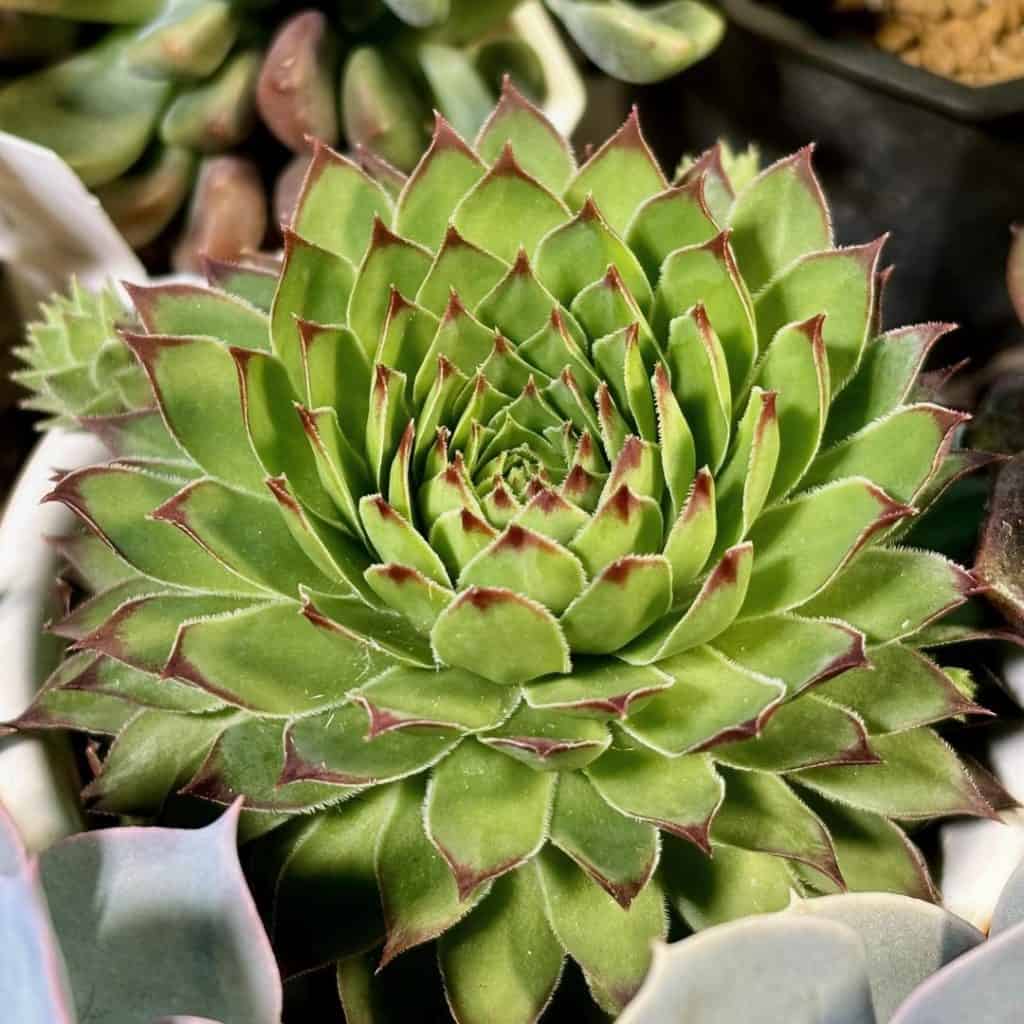
The rosettes of this evergreen succulent multiply into dense, spreading mats. Let it drape over rocks and logs as lush, textured groundcover.
35. Echeveria melaco
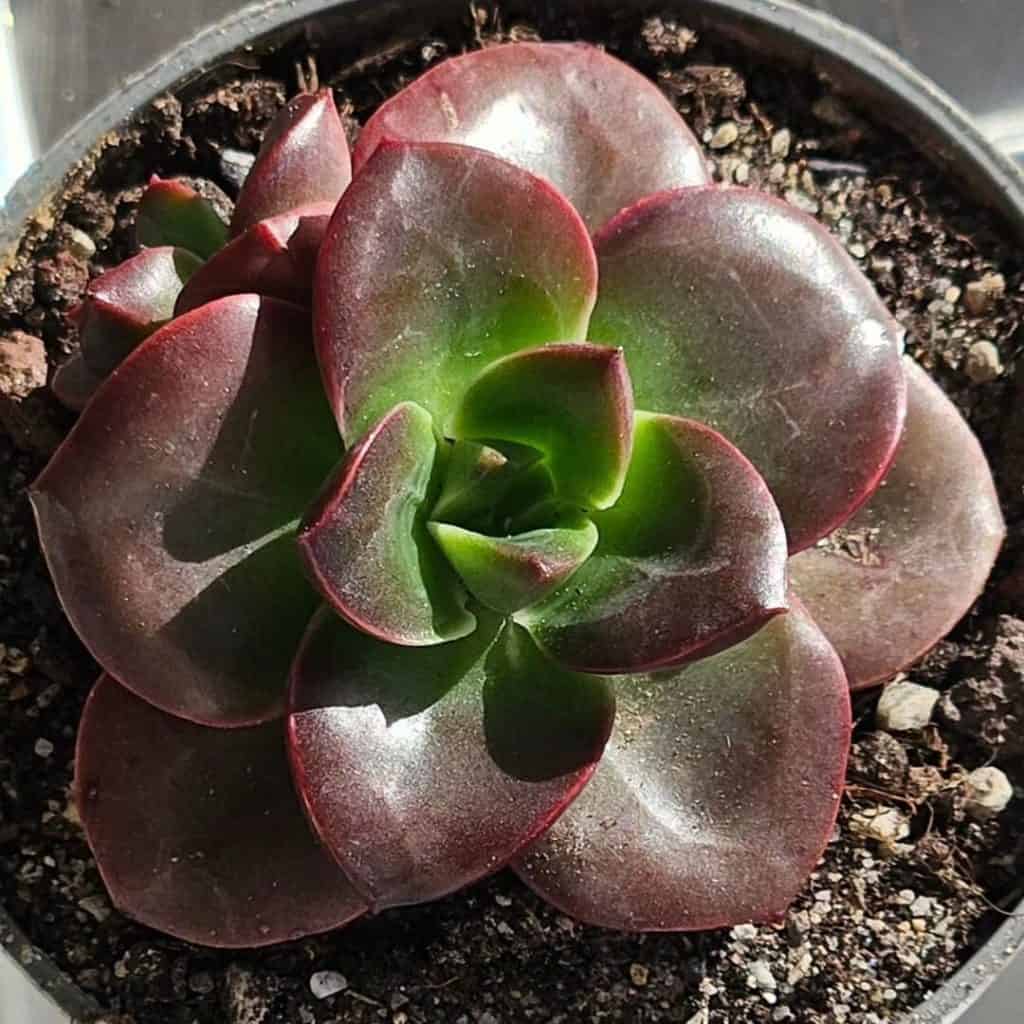
The spade-shaped, multicolored leaves densely spiral into stunning rosettes up to 6 inches wide. This makes an awesome eye-catching focal plant.
Frequently Asked Questions
Do I need moss in my succulent terrarium?
No, you typically won’t need moss in a succulent terrarium as moss and succulents have different growing requirements. Moss prefers consistent moisture while succulents need very well-draining soil and drier conditions. Instead of moss, use low-growing succulent varieties like Crassula, Sedum, or Graptopetalum as a groundcover to give your terrarium a lush look. These succulent groundcovers will fill in nicely without adding excess moisture issues.
Do succulents do well in closed terrariums?
Succulents need very specific conditions to really thrive, which makes closed terrariums a poor choice for most varieties. The lack of airflow and potential moisture buildup in a closed terrarium can lead to issues like rot or pests for water-storing succulents. An open-air terrarium design will allow succulents to get the bright light and decent airflow they need. You’ll have much better success with succulents in this type of terrarium environment.
What’s the best potting mix for succulent terrariums?
Quick-draining gritty soil is a must for succulent terrariums. Use a commercially made succulent potting mix or create your own by combining regular potting soil with additions like coarse sand, perlite, lava rock or crushed granite to increase drainage and airflow to the roots. Proper soil will help prevent rot.
How do I water succulents in a terrarium?
Water succulents deeply but infrequently in your terrarium. Allow the potting mix to fully dry out between waterings. Water thoroughly until it drains out the bottom, then let it become completely dry again before watering once more. Consistent dryness between waterings is important. Underwatering is preferable to overwatering for these drought-tolerant plants.
What tools do I need for terrarium building?
Gather materials like a glass container, potting mix, plants, décor pieces like rocks/driftwood, scissors, tongs or chopsticks to move items around, and a small shovel or scoop. Having the right basic supplies will make constructing your dream succulent terrarium much easier! Take your time putting it all together.
